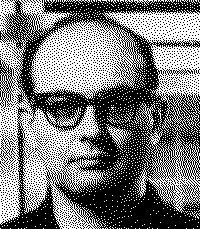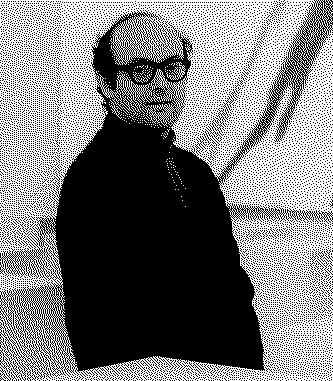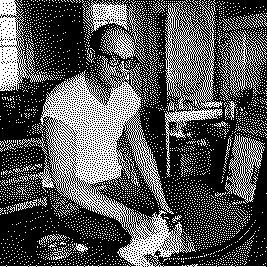Artists/Sol LeWitt
Fast Facts
Conceptual Art Pioneer
LeWitt is considered one of the founders of Conceptual art, a movement that emphasized the idea or concept behind the work of art over its aesthetic or material properties.
Wall Drawings and Structures
He is renowned for his wall drawings and "structures" (a term he preferred over sculptures). These works range from large-scale installations to smaller geometric forms.
Instructions for Art
LeWitt often created his art by writing a set of instructions that other people could execute. This approach emphasized the idea of the artwork over its execution.
Geometric Forms
Much of his work features simple geometric shapes and lines, reflecting his interest in reducing art to its most basic elements.
Grids and Modular Structures
He frequently used grids and repetitive modular units, exploring systematic approaches to art-making.
Variations on a Theme
LeWitt often explored variations on a theme, creating series of works that systematically altered a single concept or form.
Books and Writings
In addition to his visual art, LeWitt wrote extensively, including his famous "Paragraphs on Conceptual Art" (1967), which helped define the Conceptual art movement.
Biography



Sol LeWitt, an American artist born on September 9, 1928, in Hartford, Connecticut, was a key figure in bridging Minimalism and conceptual art.
His contributions significantly influenced these movements, emphasizing the concept over the physical execution of art. LeWitt’s philosophy centered around the idea that the idea itself could be the art, leading him to develop guidelines for creating art that could be executed by others, thereby challenging traditional notions of artistry and authorship.
LeWitt's early life and education played a crucial role in shaping his artistic direction. The son of Russian immigrants, he attended Syracuse University, where he received a Bachelor of Fine Arts in 1949. After serving in the military in Japan and Korea, LeWitt moved to New York City in 1953, initially working as a graphic designer for architect I.M. Pei. This period was crucial for LeWitt, as it was during the 1950s that he began to develop his essentialist, emotion-removed approach to art, marking the beginning of his experimental phase with structures and serial projects (Encyclopedia Britannica) (The Museum of Modern Art).
LeWitt’s work is renowned for its simplicity and complexity, utilizing geometric shapes and a limited color palette to explore repetitive forms and the systematic arrangement of visual elements. He is perhaps best known for his wall drawings, which are executed according to detailed instructions provided by LeWitt, allowing for the works to be recreated indefinitely. This method highlighted his belief in the primacy of the concept over the physical artifact and introduced a new form of artistic collaboration and execution (Wikipedia) (The Museum of Modern Art).
During the late 1960s, LeWitt's work evolved significantly. He began producing his famous "structures," a term he preferred to "sculptures," which were based on the modular form of the cube and played with visual complexity through simple geometric forms. This was also the time when he published "Sentences on Conceptual Art," which became a foundational text for conceptual art. LeWitt's sculptures, which ranged from closed-form wooden objects to open modular structures made from metal, were characterized by their emphasis on conceptual frameworks over aesthetic considerations. His explorations in sculpture extended to the use of cinder blocks and concrete in the 1980s and 1990s, demonstrating his continuous interest in geometric forms and the systematic approach to art-making (Wikipedia).
LeWitt's legacy extends beyond his artwork, influencing generations of artists with his ideas about art as a concept that can be executed by anyone following a set of instructions. He moved to Spoleto, Italy, in 1980 and later made Chester, Connecticut, his primary residence upon returning to the United States in the late 1980s. Sol LeWitt passed away on April 8, 2007, in New York, leaving behind a significant impact on contemporary art. His work has been the subject of numerous solo exhibitions worldwide and continues to be celebrated for its innovative approach to creation and interpretation (Wikipedia).
Importance
Sol LeWitt's significance in the art world is both vast and multifaceted, reflecting his groundbreaking contributions to conceptual art and minimalism. His work and theories have profoundly influenced the direction of modern and postmodern art, with implications that reverberate in contemporary artistic practices.
Pioneering Conceptual Art
LeWitt is celebrated for his role in conceptual art's development during the 1960s and 1970s, emphasizing the idea behind an artwork over its physical form. This shift marked a departure from the emotive qualities of abstract expressionism towards a more intellectual and analytical approach to art creation. LeWitt's methodologies, particularly his use of written instructions for the execution of his works, underscore the primacy of the concept, fostering a new understanding of the artist's role and the creative process (The Art Story) (Smithsonian American Art Museum).
Innovative Use of Geometric Forms
LeWitt's art is known for its simplicity and use of geometric shapes, exploring seriality and variation within strict compositional rules. This exploration was not just an aesthetic choice but also a profound inquiry into the nature of art and perception. His modular cubes and wall drawings, executed by others following his detailed guidelines, challenge traditional notions of authorship, craftsmanship, and the uniqueness of art objects (Wikipedia) (The Art Story).
Integration of Art with Architecture
LeWitt's wall drawings, particularly noteworthy for their integration into the architectural environment, have been influential. These works, ranging from simple line drawings to complex color fields and geometric patterns, interact with the space in which they are situated, inviting viewers to experience art in relation to their physical surroundings. This approach has paved the way for future artists to consider the spatial and contextual aspects of art-making (Wikipedia).
Influence on Educational Practices
LeWitt's artworks and his approach to creation have found applications in educational contexts, encouraging investigations into the mathematical and conceptual underpinnings of art. His works, especially the modular cubes, serve as tools for exploring ratio, geometry, and permutation, demonstrating art's potential to intersect with other fields of knowledge and study (Wikipedia).
A Legacy of Open-Ended Creativity
Despite the precise and systematic nature of his conceptual guidelines, LeWitt's art possesses a degree of playfulness and open-ended interpretation. This characteristic allows viewers and executors of his work to engage in a participatory manner, interpreting his instructions differently and generating varied outcomes. This aspect of his work emphasizes the collaborative and dynamic nature of the creative process, inviting a broader dialogue between the artwork, its creators, and its audience (SFMOMA).
Technique
Sol LeWitt's techniques in art are distinguished by their innovative approach to conceptual art and minimalism, laying the groundwork for future generations of artists.
Modular Cubes and Structures
LeWitt experimented with modular forms, particularly cubes, that were executed based on mathematical permutations and combinations. He established a specific ratio between the negative and positive spaces in these cubes, an approach that highlighted the conceptual process over the physical creation of the artwork. This technique was extended to larger scales, including sculptures made from concrete blocks and other materials, illustrating his deep interest in geometry and spatial relationships (Wikipedia).
Wall Drawings
One of LeWitt's most influential contributions was his wall drawings, for which he created guidelines or diagrams that others could execute. These instructions led to the creation of art that varied with each installation, emphasizing the idea that the concept of the artwork was more important than its physical form. LeWitt's wall drawings explored a range of geometric forms and were executed in various mediums, including graphite, crayon, colored pencil, and vivid ink washes. He applied systematic approaches, such as rotations and mirrors, to generate permutations of basic geometric lines and shapes (Wikipedia) (The Art Story).
Playfulness and Open-Ended Interpretation
Despite the mathematical and systematic nature of his work, LeWitt's art maintains an element of playfulness and invites open-ended interpretation by the viewer. This approach allows for a dynamic engagement with the artwork, encouraging viewers to explore the conceptual underpinnings and the various outcomes that can arise from a single set of instructions (SFMOMA).
Collaborative Execution
LeWitt often employed teams of assistants to execute his artworks, based on his detailed instructions. This method challenged traditional notions of authorship and the artist's hand in the creative process, suggesting that the conception of the artwork is as significant, if not more so, than its physical execution (Smithsonian American Art Museum).










